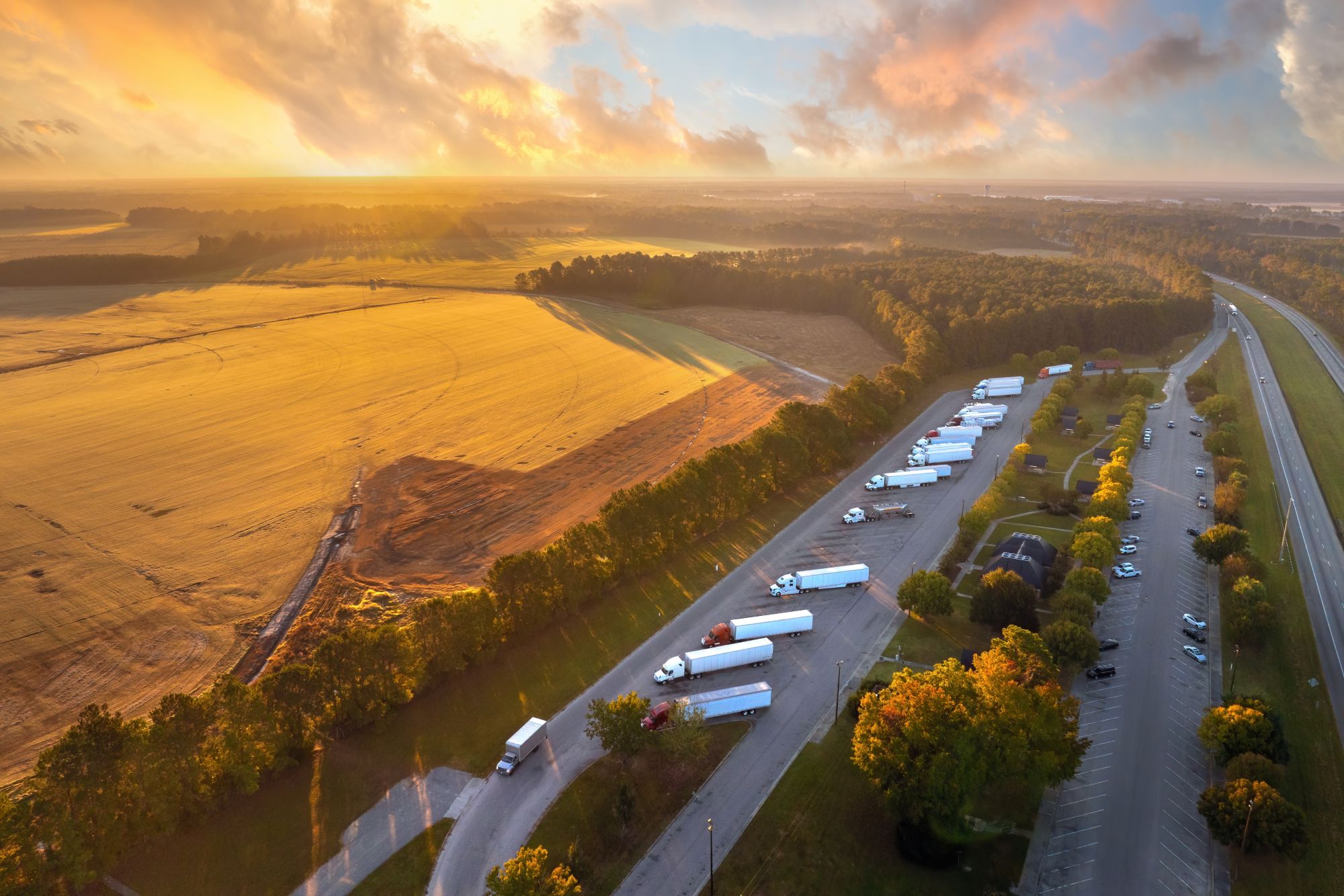
Guest
Ako sa stať vodičom nákladného vozidla
Vytvorené: 26. 09. 2025
•
Aktualizované: 26. 09. 2025
Dopyt po profesionálnych vodičoch nákladných vozidiel v celej Európe nebol nikdy vyšší. Združenie cestnej dopravy v Spojenom kráľovstve odhaduje, že v nasledujúcich piatich rokoch bude potrebných 200 000 nových vodičov nákladných vozidiel, aby sa zabezpečil chod dodávateľských reťazcov. A rovnaká situácia je vo väčšine Európy. Podľa údajov International Road Transport Union bolo v roku 2024 v celej Európe 426 000 neobsadených miest vodičov.
To však vytvára príležitosť. Ako sme už skúmali](https://snapacc.com/newsroom/is-logistics-a-new-alternative-to-further-education-for-school-leavers/), odvetvie nákladnej dopravy ponúka perspektívu stálej práce pre absolventov škôl, ktorí zvažujú alternatívu k univerzite, a pre dospelých, ktorí sa chcú rekvalifikovať. Stať sa vodičom nákladného auta je cesta k istému zárobku a štruktúrovanej kariére.
Mnohí si kladú otázku: ako sa stať vodičom nákladného auta? Odpoveď nezávisí len od školenia a licencií, ale aj od pochopenia toho, čo znamená vstúpiť do profesie, ktorá udržiava európske hospodárstvo v pohybe.
Kto sa môže stať vodičom nákladného auta?
Jedným z hlavných lákadiel povolania vodiča je jeho dostupnosť. Na to, aby ste mohli začať, nepotrebujete vysokoškolské vzdelanie ani dlhoročnú odbornú prípravu; pred získaním odbornej kvalifikácie stačí mať štandardný vodičský preukaz (skupina B).
Minimálny vek na absolvovanie výcviku je v Spojenom kráľovstve aj v celej EÚ 18 rokov, čo znamená, že absolventi škôl môžu prejsť priamo z vodičského preukazu na profesionálny výcvik vodičov nákladných vozidiel. Mnohé firmy však uprednostňujú, aby medzinárodní vodiči mali minimálne 21 rokov, vzhľadom na zvýšenú zodpovednosť, ktorá je spojená s diaľkovou dopravou.
Dôležitá je aj zdravotná spôsobilosť. Každý žiadateľ musí absolvovať lekársku prehliadku, aby mohol získať preukaz na nákladné vozidlá. V Spojenom kráľovstve zahŕňa celý rad testov, vrátane kontroly zraku, merania krvného tlaku a vyšetrenia na ochorenia, ako je epilepsia, srdcové ochorenie alebo spánkové apnoe.
Európske krajiny uplatňujú rovnaké zdravotné normy platné v celej EÚ, pričom pravidelné obnovovanie zaručuje, že vodiči zostanú zdraví počas celej svojej kariéry.
Koľko zarába vodič nákladného auta?
Pre mnohých ľudí, ktorí zvažujú prechod k profesionálnemu šoférovaniu, je kľúčovou otázkou: koľko zarábajú vodiči nákladných vozidiel?
Odpoveď sa líši v závislosti od lokality, skúseností a druhu vykonávanej práce, ale v celej Európe táto profesia ponúka konkurencieschopný plat v porovnaní s inými základnými pracovnými miestami.
● Nový vodič v Spojenom kráľovstve zvyčajne začína na približne 27 000 librách ročne. Tí, ktorí prejdú na diaľkovú dopravu, najmä na medzinárodných trasách, môžu zaznamenať nárast platu až k 45 000 GBP - niekedy aj viac, ak prevážajú špecializované alebo nebezpečné náklady. those handling special loads, hazardous goods or operating across borders.
● V Španielsku sú platy zvyčajne nižšie ako v Spojenom kráľovstve, zvyčajne okolo 36 600 EUR, hoci veľké logistické firmy vo veľkých mestách môžu ponúknuť viac.
● Poľsko v posledných rokoch zaznamenáva veľký dopyt po vodičoch, ale mzdy zostávajú skromné, v priemere okolo 92 400 PLN (približne 21 690 EUR).
● Rumunsko sa nachádza na spodnej hranici rebríčka, pričom vodiči zvyčajne zarábajú 80 550 RON (16 000 EUR), hoci medzinárodné zmluvy o preprave môžu výrazne zvýšiť mzdu.
Samozrejme, plat nie je celá história. Mnohé spoločnosti ponúkajú príplatky za nadčasy, príspevky na stravu alebo bonusy za dosiahnutie cieľov v oblasti doručovania. A keďže dopyt po vodičoch sa nezmenšuje, táto práca prináša aj istotu, ktorej sa môže rovnať len máloktorá iná základná profesia.
Aký vodičský preukaz na nákladné vozidlo potrebujem?
Predtým, ako si sadnete za volant nákladného vozidla, budete potrebovať správny vodičský preukaz. V Spojenom kráľovstve to znamená, že okrem štandardného vodičského preukazu na osobné vozidlo musíte získať aj vodičský preukaz na veľké nákladné vozidlá (LGV) alebo ťažké nákladné vozidlá (HGV). Tieto pojmy sa často používajú zameniteľne, ale oba sa vzťahujú na rovnaké kategórie profesionálneho riadenia.
Niektorí ľudia začínajú s vodičským preukazom skupiny C1, ktorý sa vzťahuje na stredne veľké vozidlá s hmotnosťou od 3,5 do 7,5 tony - často sa používa pre menšie dodávkové vozidlá.
Väčšina začínajúcich vodičov nákladných vozidiel však získava priamo vodičský preukaz skupiny C, niekedy nazývaný aj vodičský preukaz na nákladné vozidlá 2. triedy. Ten vám umožňuje riadiť tuhé vozidlá s hmotnosťou nad 7,5 tony. Pre tých, ktorí chcú prejsť na kĺbové nákladné vozidlá - väčšie vozidlá, ktoré sa bežne používajú na diaľkových a medzinárodných trasách - je potrebný vodičský preukaz skupiny CE (trieda 1).
Popri týchto kvalifikáciách je súčasťou osvedčenia o odbornej spôsobilosti vodiča (CPC), ktoré je zákonnou požiadavkou v Spojenom kráľovstve aj v EÚ. Toto osvedčenie zahŕňa kombináciu úvodného školenia a pravidelných obnovovacích kurzov, ktorých cieľom je udržiavať vodičov v aktuálnom stave v oblasti bezpečnosti, predpisov a cestných zručností.
Tento systém odráža celoeurópsky licenčný rámec. Hlavné rozdiely medzi jednotlivými krajinami spočívajú v poskytovateľoch odbornej prípravy, súvisiacich nákladoch a na niektorých miestach aj v dostupnosti skúšobných miest.

Ako získať vodičský preukaz na nákladné vozidlá
Získanie vodičského preukazu na nákladné vozidlá je prvým krokom k profesionálnemu šoférovaniu. V Spojenom kráľovstve môžete začať s týmto procesom, keď ste držiteľom štandardného vodičského preukazu skupiny B pre osobné automobily. Potom požiadate o dočasný preukaz na nákladné vozidlá, ktorý vám umožní začať výcvik na veľké nákladné vozidlá.
Samotný výcvik kombinuje teoretické a praktické prvky: hodiny v učebni o bezpečnosti na cestách a predpisoch, po ktorých nasleduje jazda v ťažkých vozidlách pod dohľadom. Uchádzači musia absolvovať aj moduly na získanie osvedčenia o odbornej spôsobilosti vodiča (CPC), ktoré zaručuje, že vodiči sú vybavení nielen na bezpečné riadenie vozidiel, ale aj na zvládanie každodenných požiadaviek nákladnej dopravy.
Koľko stojí stať sa vodičom nákladného auta?
Jednou z najčastejších otázok, ktorú si kladú všetci, ktorí uvažujú o tomto povolaní, je, koľko stojí školenie vodičov nákladných vozidiel. V Spojenom kráľovstve sa ceny líšia v závislosti od poskytovateľa, lokality a od toho, či sa školíte na vodičský preukaz skupiny C alebo pokročilejšej skupiny CE. V priemere môžu noví vodiči počítať s výdavkami od 2 000 do 3 500 libier na pokrytie lekárskych prehliadok, poplatkov za dočasný vodičský preukaz, teoretických testov, praktického výcviku, modulov CPC a záverečnej skúšky. Niektoré spoločnosti, najmä väčšie logistické firmy, ponúkajú programy na dotovanie alebo úplné financovanie školenia výmenou za pracovný záväzok, čím sa táto cesta stáva dostupnejšou.
V iných častiach Európy sa čísla príliš nelíšia. V Španielsku stojí školenie spravidla od 2 000 do 3 000 EUR za kompletné školenie a certifikáciu. V Poľsku je táto suma nižšia, v priemere 1 500 až 2 500 EUR. Rumunsko má jedny z najnižších nákladov na školenie v Európe, pričom mnohí uchádzači zaplatia za kvalifikáciu približne 1 000 až 1 800 EUR, hoci mzdy na vstupnej úrovni zvyčajne odrážajú túto nižšiu bariéru vstupu.
Ako dlho trvá, kým sa stanete vodičom nákladného vozidla?
Čas potrebný na získanie kvalifikácie vodiča nákladného vozidla závisí od miesta, kde sa školíte, od typu vodičského preukazu, o ktorý sa usilujete, a od toho, ako rýchlo si môžete zabezpečiť termín skúšky. V Spojenom kráľovstve väčšina ľudí absolvuje školenie a zloží skúšky do dvoch až štyroch mesiacov. Niektoré intenzívne kurzy trvajú niekoľko týždňov, hoci mnohí vodiči zistili, že rozvrhnutie lekcií im pomáha lepšie si osvojiť zručnosti.
V Španielsku a Poľsku je proces podobný, hoci dlhšie čakacie zoznamy na miesta na skúšky môžu predĺžiť časový harmonogram. V Poľsku vysoký dopyt po profesionálnych vodičoch spôsobil, že v školiacich strediskách sú úzke miesta, čo znamená, že niektorí uchádzači čakajú na praktickú skúšku niekoľko mesiacov. Rumunsko má jednu z najrýchlejších ciest, pričom výcvik a skúšky sa často ukončia do ôsmich až dvanástich týždňov.
Učenie sa nekončí ani po získaní vodičského preukazu. Každý profesionálny vodič musí každých päť rokov absolvovať 35 hodín školenia CPC, aby si udržal aktuálne zručnosti a bol pripravený na najnovšie predpisy a bezpečnostné normy.
Ako dlho môže vodič nákladného auta šoférovať?
Po získaní kvalifikácie sa na túto prácu vzťahujú prísne obmedzenia týkajúce sa času, ktorý môžete stráviť za volantom. Tieto limity sú určené na ochranu vodičov aj ostatných účastníkov cestnej premávky tým, že znižujú únavu.
V Spojenom kráľovstve a EÚ platia rovnaké pravidlá. Vodiči môžu stráviť za volantom maximálne deväť hodín každý deň, pričom tento čas sa môže dvakrát týždenne predĺžiť na desať hodín. Týždenné limity sú obmedzené na 56 hodín jazdy, pričom počas dvoch po sebe idúcich týždňov nesmú presiahnuť 90 hodín.
Po 4,5 hodinách jazdy musí vodič absolvovať minimálne 45-minútovú prestávku. Takisto má nárok na denný a týždenný odpočinok na zotavenie pred návratom do práce.
Tieto pravidlá sa prísne kontrolujú a vo vozidlách sú namontované tachografy, ktoré zaznamenávajú hodiny a zabezpečujú ich dodržiavanie. Pre tých, ktorí pracujú na diaľkových trasách, ako sú španielski vodiči na Pyrenejskom polostrove alebo poľskí dopravcovia prepravujúci tovar cez východné hranice EÚ, tieto limity určujú rytmus práce. Určujú, kedy a kde vodiči zastavia, a preto je prístup k bezpečným a zabezpečeným miestam na odpočinok dôležitou súčasťou pracovného dňa.
Začínate ako vodič nákladného vozidla
Stať sa vodičom nákladného vozidla nie je len o absolvovaní skúšok. Ide o to, aby ste nastúpili do úlohy, ktorá nesie skutočnú zodpovednosť, ale prináša aj dlhodobé príležitosti. So správnym vodičským preukazom, správnym školením a odhodlaním prijať život na cestách je to kariéra, ktorá môže poskytnúť stabilitu aj postup.
V spoločnosti SNAP vieme, ako takéto cesty vyzerajú. Preto spolupracujeme s vozovými parkami a vodičmi v celej Európe, aby sme ich urobili bezpečnejšími, jednoduchšími a pohodlnejšími - od bezpečného parkovania a lepších sociálnych zariadení až po inteligentné digitálne nástroje, ktoré šetria čas a stres. Bez ohľadu na to, či práve začínate, alebo šoférujete už roky, sme tu, aby sme vás podporili na každom kilometri cesty.
Stiahnite si aplikáciu intruck ešte dnes a nájdite dôveryhodné parkoviská, zariadenia a služby, nech už vás vaša cesta zavedie kamkoľvek.



